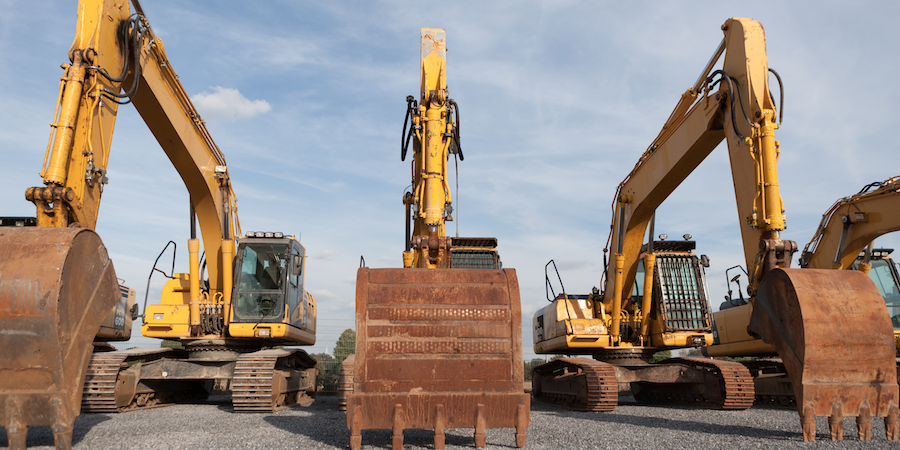As most readers of this blog are aware, the ultimate vision for C3 is the creation of a sustainable and credentialed craft workforce for the commercial construction industry. In short, commercial construction is not attracting young people in near enough numbers to replace those who are leaving it for reasons such as retirement. C3 was created to address this challenge, and we have begun to gain traction. As 2015 comes to a close, I would like to reflect on the progress that C3 has made and look forward to 2016.This year has seen C3 take marked strides forward in this long and complex journey. Among the highlights are the robust growth among its ranks of owners, contractors and specialty contractors, the addition of several new projects that specify C3 requirements in their project specifications, the hiring of Maria Aimone as C3 Operations Manager and the launch of the new C3 Training Database.
Reshaping the Construction Industry
Nadine Post writes an interesting piece for ENR asking where the revolution in the construction industry is and explains that all the technology changes that are taking place are making projects much more complex to design and build.
December 16, 2015
Click on image to view more information.November PPIs rise for new buildings, some subcontractors, but fall for many inputsEditor’s note: Construction Citizen is proud to partner with AGC America to bring you AGC Chief Economist Ken Simonson's Data DIGest. Check back each week to get Ken's expert analysis of what's happening in our industry.The producer price index (PPI) for final demand in November was unchanged from October on a not-seasonally-adjusted basis (up 0.3%, seasonally adjusted) and declined 1.1% year-over-year (y/y), the Bureau of Labor Statistics (BLS) reported Friday. AGC posted tables and an explanation focusing on construction prices and costs. Final demand includes goods, services and five types of nonresidential buildings that BLS says make up 34% of total construction. The PPI for final demand construction, not seasonally adjusted, decreased 0.3% for the month and increased 2.1% y/y. The overall PPI for new nonresidential building construction—a measure of the price that contractors say they would charge to build a fixed set of five categories of buildings—climbed 2.0% since November 2014. The 12-month increases ranged from 1.0% for healthcare construction to 1.9% for industrial buildings, 2.2% for schools and warehouses, and 2.3% for offices.
December 15, 2015
“If you work hard and show initiative, there is no end to where you can go. The work is out there, all you have to do is go find it and never stop learning.” – Moore, Pipe Welder at Jacobs
December 14, 2015
The Bureau of Labor Standards (BLS) has released its projections for job growth for the period from 2014-2024, and construction job growth leads the goods producing sector with an increase of almost 800,000 jobs. That is good news for the industry, but one statement in the release is revealing. “Construction is projected to add 790,400 jobs by 2024. Even with these additional jobs, employment in the construction major sector is not projected to return to the 2006 peak.”The numbers show a picture of continued growth in the service sectors, especially in healthcare (25% of the total job growth or 3.8 million jobs) that reflects the aging population. Manufacturing is projected to be the big loser with the 2024 numbers reflecting a loss of 814,00 jobs, likely to increased productivity at home or continued globalization of the manufacturing workforce.You can read the press release and delve into the charts here.
December 11, 2015
One of the perhaps ironic challenges discovered by Construction Citizen during the publication’s recent visit to Lee College is that because jobs in the petrochemical industry can be so lucrative, we have some trouble at times recruiting enough instructors to meet demands.Ideal candidates for instructors are people with industry experience, but our college and others often can’t pay enough to lure them from the well-paying jobs they currently hold. My colleague Layton Childress, Dean of Applied Sciences, said "I've never seen such demand where the jobs are there and the salaries are so high.” He added that many students “don't even realize what an opportunity they have here to go to school for two years and then be set for life.”
December 10, 2015
After a yearlong debate about the right way to handle it, the Dallas City Council this week passed a requirement for mandatory rest breaks for construction workers.
December 09, 2015
Texas has room to improve its appeal as a state for contractors to do business according to a scorecard launched by Associated Builders and Contractors (ABC).“Building America: The Merit Shop Scorecard” reviews and grades state-specific information significant to the success of the commercial and industrial construction industry. The scorecard website, meritshopscorecard.org, identifies states, such as Texas where strategic improvements need to be made to create an environment where merit-shop contractors are well positioned to succeed and states that have created contractor-friendly business environments.
December 09, 2015
Click on image to view more information.Construction employment in November, spending in October climb brisklyEditor’s note: Construction Citizen is proud to partner with AGC America to bring you AGC Chief Economist Ken Simonson's Data DIGest. Check back each week to get Ken's expert analysis of what's happening in our industry.Nonfarm payroll employment increased by 211,000 in November, seasonally adjusted, and by 2,637,000 (1.9%) year-over-year (y/y), while the unemployment rate held steady at a 7-1/2 year low of 5.0%, the Bureau of Labor Statistics (BLS) reported Friday. Construction employment rose by 46,000 for the month (to 6,490,000) and by 259,000 (4.2%) over 12 months. The employment level was the highest since January 2009. The number of unemployed jobseekers who last worked in construction decreased from 629,000 in November 2014 to 536,000 in November 2015, the lowest November total since 2000.
December 08, 2015
The design of new speculative office buildings will now shift. We are about to see sensors embedded in walls and floors around elevator cores and entry doors that will scan for chemicals and explosives.
December 07, 2015



.jpeg?itok=6uFZXEBH)





.jpeg?itok=4Vi_1nJG)






























